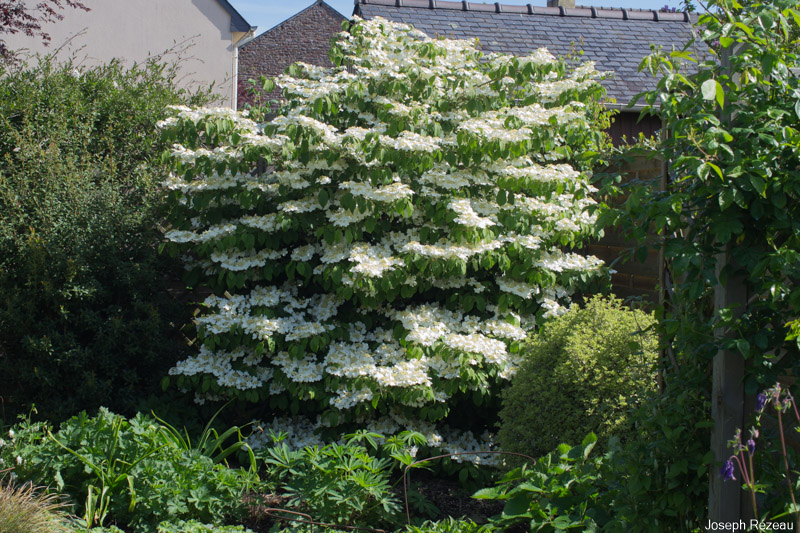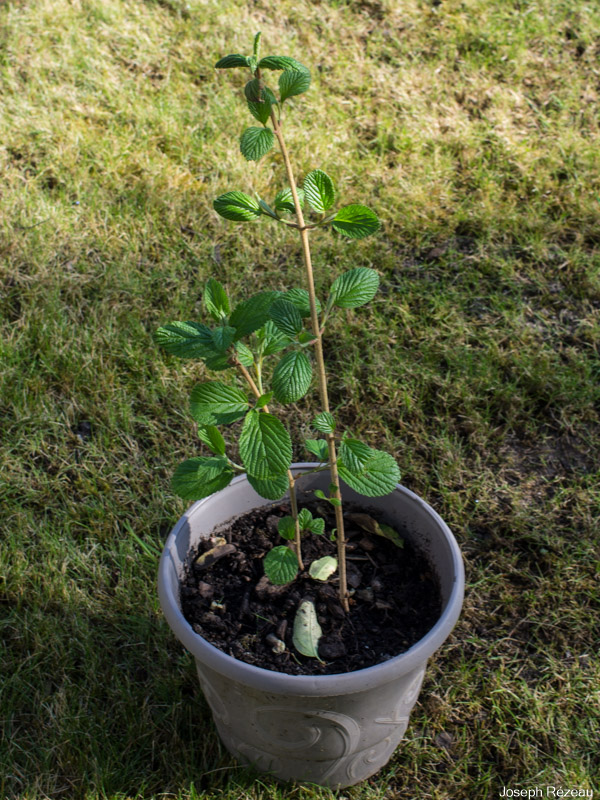Layering? What is it?
Stems that are still attached to their parent plant may form roots where they come in contact with a rooting medium. This method of vegetative propagation is generally successful, because water stress is minimized and carbohydrate and mineral nutrient levels are high. The development of roots on a stem while the stem is still attached to the parent plant is called layering. A layer is the rooted stem following detachment (removal) from the parent plant. [NC state extension]
There are several layering techniques, but my preference goes to self-layering: the mother plant allows its lower branches to lie on the ground, where they take root naturally. You can help it by holding a branch firmly to the ground with a “pin”. I have had several layering plants in the garden in recent years: Daphne x transatlantica ‘Eternal Fragrance’, Lavatera x clementii ‘Barnsley’ and Viburnum plicatum f. tomentosum ‘Lanarth’, which I will tell you about today.
This superb viburnum was planted when the garden was extended back in 2014, following the advice of Fanny, from the ESAT de la Simonière nursery, who had shown us a fine specimen in the nursery car park. This specimen has grown very steadily, until it now reaches the following dimensions: H. 270 cm x W. 300 cm. When I inspected this specimen recently, I noticed that it had made a number of self-layerings. I picked up a specimen and put it in a pot for observation. It was well rooted, so should perform well. As there is no room for a second viburnum of this size in the garden, this plant will have to go to another garden, where I hope it will be well cared for and will make another gardener happy.


